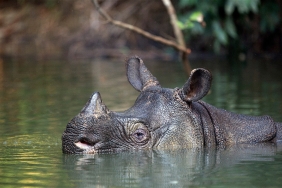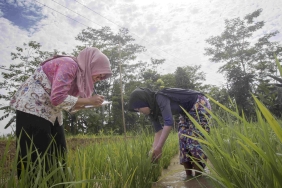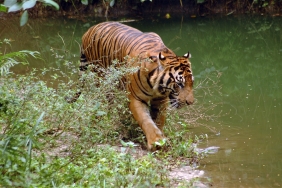WWF: INDONESIA RHINO EMERGENCY
Ujung Kulon, September 22, 2017. International Rhino Day, which falls on September 22, reminds us of Indonesia's rhino emergency. Sumatran (Dicerorhinus sumatrensis) and Javanese (Rhinoceros sondaicus) rhinos are currently facing an emergency situation, due to massive habitat pressure in Sumatra, the natural disaster of the eruption of Mt. Anak Krakatau, livestock-borne diseases and invasive trap plants are pressures for Javan rhinos in Ujung Kulon. The Indonesian government needs to react quickly so that the rhino does not suffer the same fate as the Javan tiger, extinction.
The Sumatran Rhino emergency is occurring because its habitat is running out, from eight pockets of rhino habitat, currently only three conservation and protected areas remain: Way Kambas National Park, Bukit Barisan Selatan National Park and Leuser Ecosystem Area. Ironically, the status of these areas does not guarantee that rhinos are free from threats. Continuous surveys and monitoring in recent years have shown a declining population trend. Their numbers are estimated to be less than 100 individuals since the last five years.
"We are in a race against time to save Indonesia's rhinos, so that they do not suffer the same fate as the Javan tiger," said Arnold Sitompul, Conservation Director of WWF-Indonesia. Arnold continued, "Habitat protection alone and allowing them to breed naturally is not enough to save the survival of Rhinos, it is necessary to immediately move rhinos to a safe place and conduct more active semi-natural breeding and better area management".
The Rhino Emergency is also happening to the Javan Rhino. The Javan Rhino population in Ujung Kulon National Park (TNUK) is otherwise relatively overpopulated. Even so, their fate is no less critical. They live in an area where the Ujung Kulon peninsula is also a tsunami-prone zone due to the eruption of the Anak Krakatau volcano and the shifting of continental plates. If this happens, the entire Javan rhino population will be wiped out. A census of community livestock around the TNUK area showed that 90% of community buffaloes were positive for trypanosoma bacteria. The activity of livestock that are not penned and released into the TNUK area is feared to spread the bacteria to Javan rhinos and it is not impossible to cause death.
To avoid population extinction due to natural disasters, fragmenting the Javan Rhino population by establishing a second population is a strategic step needed for the long-term conservation of this species. This rhino "New Home" is not just about reducing population density and giving space for Javan Rhinos to develop healthily, but is an anticipatory step to prevent Javan Rhinos from extinction.
Another challenge in Javan Rhino conservation in Ujung Kulon is the presence of langkap trees, an invasive plant that disrupts the growth of rhino food. Control of langkap trees needs to be carried out continuously so that there is a conducive growing space for hundreds of species of food trees for Javan Rhinos.
This rhino is the pride of Indonesia. They are the only species in the world, but in reality, they are critically endangered. If Indonesia fails to save the Sumatran and Javan Rhinos from extinction, the world will lose two species. It takes the seriousness of all parties to save them. It is our duty to help protect them. The fate of rhinos is in your hands! You can keep them alive or make them extinct. Indonesian government policy is needed to immediately relocate rhinos, create semi-natural habitats that can support rhino breeding and strengthen area security.





